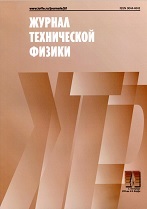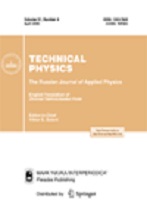|
This article is cited in 9 scientific papers (total in 9 papers)
Biomedical physics
Possible mechanism of infrared radiation reception: the role of the temperature factor
I. L. Yachnev, V. A. Penniyaynen, S. A. Podzorova, I. V. Rogachevskii, B. V. Krylov
Pavlov Institute of Physiology Russian Academy of Sciences
Abstract:
The role of the temperature factor in the mechanism of reception of the CO$_2$ laser low-power infrared (IR) radiation ($\lambda$ = 10.6 $\mu$m) by a sensory neuron membrane has been studied. Organotypic embryonic tissue culture has been used to measure and estimate the temperature of a sensory ganglia monolayer exposed to radiation at different energy densities. The effects of tissue exposure to low-power IR radiation have been investigated. It has been found that inhibition of tissue growth by radiation of low energy density (10$^{-14}$–10$^{-10}$ J/cm$^{2}$) is replaced by tissue growth (10$^{-7}$–10$^{-4}$ J/cm$^{2}$), and again followed by inhibition in the range of 0.1$^{-6}$ J/cm$^2$. A statistically significant specific reaction to nonthermal radiation has been detected at the radiation power density of 3 $\times$ 10$^{-10}$ J/cm$^2$, which is due to activation of the Na$^+$, K$^+$-ATPase transducer function. The mechanisms of interaction of IR radiation with embryonic nerve tissue have been considered. Low-power IR radiation with the wavelength of 10.6 $\mu$m has been demonstrated to specifically activate a novel signal transducer function of the sodium pump, which controls the reception of nonthermal IR radiation in the energy density range of 10$^{-14}$ to 10$^{-10}$ J/cm$^2$.
Received: 30.05.2017
Citation:
I. L. Yachnev, V. A. Penniyaynen, S. A. Podzorova, I. V. Rogachevskii, B. V. Krylov, “Possible mechanism of infrared radiation reception: the role of the temperature factor”, Zhurnal Tekhnicheskoi Fiziki, 88:2 (2018), 312–315; Tech. Phys., 63:2 (2018), 303–306
Linking options:
https://www.mathnet.ru/eng/jtf6007 https://www.mathnet.ru/eng/jtf/v88/i2/p312
|


| Statistics & downloads: |
| Abstract page: | 49 | | Full-text PDF : | 17 |
|





 Contact us:
Contact us: Terms of Use
Terms of Use
 Registration to the website
Registration to the website Logotypes
Logotypes








 Citation in format
Citation in format 
